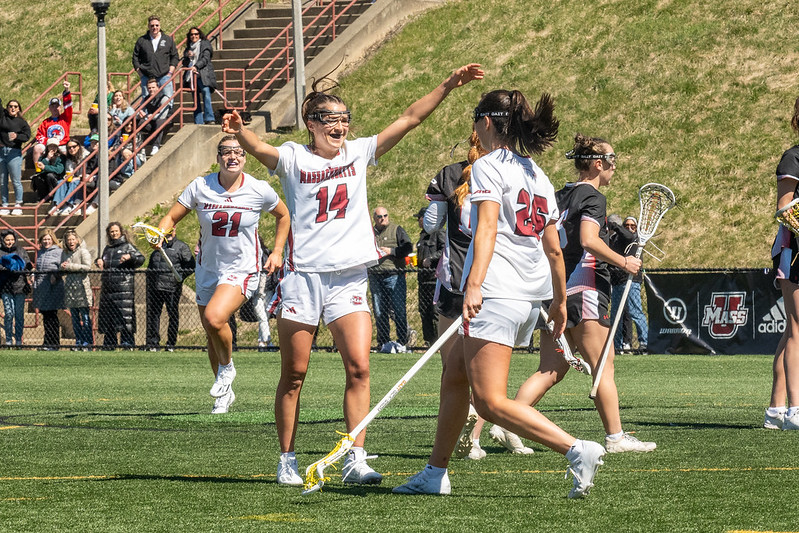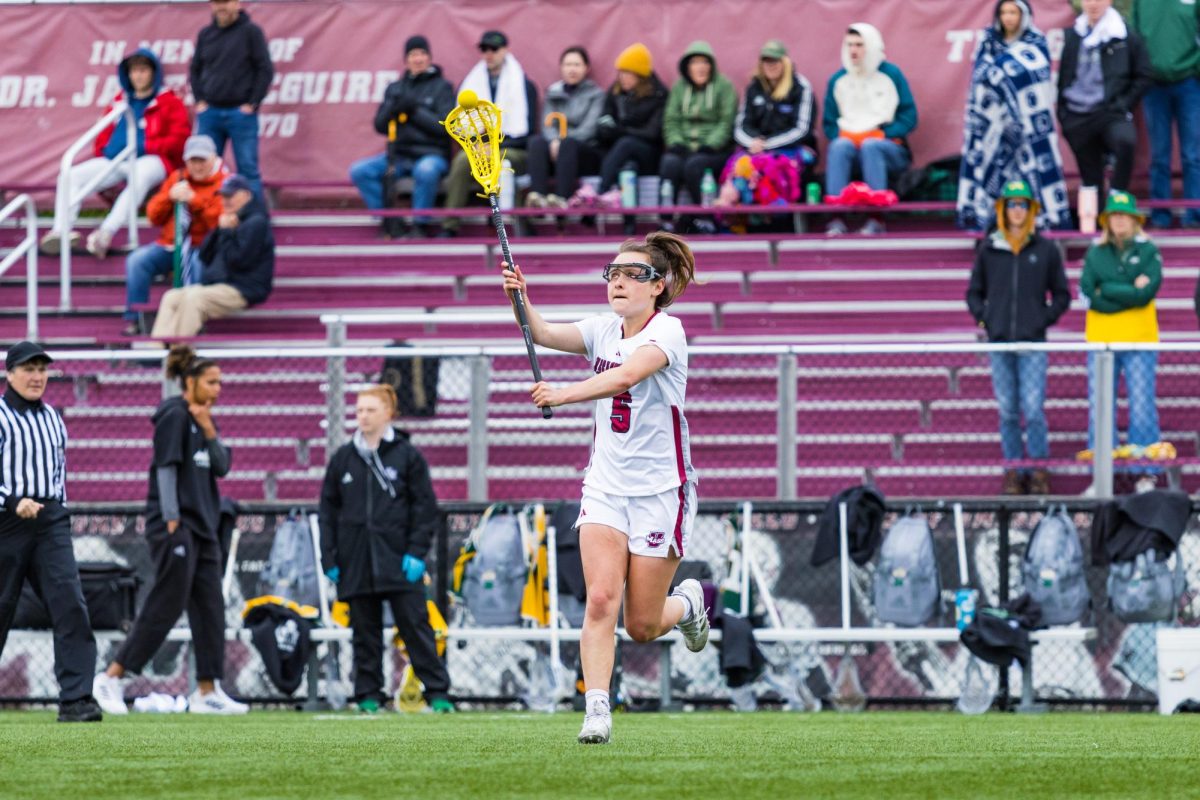
With the official announcement of the Massachusetts football team’s move to the Football Bowl Subdivision yesterday came news of a permanent home at Gillette Stadium and possible national television exposure.
Aside from the changes occurring in the football program, the move has consequences that span the length of the UMass athletic department, including women’s lacrosse.
“It’s definitely going to help our recruiting, it’s going to help our athletic department, it’s going to help our program, I think it’s just a positive on all fronts,” said Angela McMahon, who is in her first season as coach of UMass’ women’s lacrosse team.
As a result of the football program’s move, the UMass plans to use less funding from its general budget to support athletics, according to Chancellor Robert C. Holub. In addition to the revenue-building endeavors Holub believes are set in place, the University must adhere to certain standards over the next two years in order to maintain its status as a Division 1-A football program, including an increase in scholarship funding.
The NCAA requires that a Division 1-A football program offers 85 scholarships. Currently, UMass has 63, which would force it to create 22 new football scholarships.
Under the law of Title IX, this also means an increase in funding of women’s athletics.
Title IX is a Civil Rights law enacted in 1964, created to provide gender equality in the United States. In 1972, an amendment was passed that included education requirements, which provided the basis for gender equality in intercollegiate athletic programs.
According to the NCAA Gender Equality Task Force, “an athletics program can be considered gender equitable when the participants in both men’s and women’s sports programs would accept as fair and equitable the overall program of the other gender.”
In other words, “female and male student-athletes must receive athletics scholarship dollars proportional to their participation,” according to the NCAA website.
For UMass, the increase in football scholarships will implicate an equal increase in the scholarships of women’s athletic programs, or 22 new women’s scholarships.
Of the 10 women’s athletic programs at UMass, four are fully funded: softball, soccer, basketball and field hockey. The remaining six programs, crew, cross country, track and field, tennis, swimming and diving and lacrosse are all less than fully funded.
According to UMass Athletic Director John McCutcheon, no decisions have been made yet as to the allocation of those new scholarships.
McMahon said that the women’s lacrosse program is “very close” to its full allotment of 12 scholarships, but would not be specific as to how many there currently are.
Due to the recent success of the women’s lacrosse program, it is foreseeable that those new scholarships could be added to fully fund the program, but McMahon suggests that the benefits her program will have go further than monetary value.
“Getting kids to be able to go down to Gillette Stadium for home games when they’re on visits is going to be huge,” said McMahon. “Just the overall game experience and the competition that we’ll be playing in football, that is tremendous. Whatever benefits our program might receive on that front is obviously going to be a huge help, as well.”
McMahon, formerly the coach at Connecticut, joined the Minutewomen staff with the hopes of bringing the women’s lacrosse program into the purview of national recognition.
She used Northwestern, her alma mater, and Florida’s women’s lacrosse program to exemplify the benefits that success in other collegiate athletic programs can have on emerging ones.
“Florida is in their second year as a varsity program and they’re already ranked second in the country. Northwestern won a national championship within four years as a varsity program because they, sort of, had that big time football, a lot of sports were [able] to make a really quick turnaround,” said McMahon.
The UMass women’s lacrosse program is not new. It began in 1976, earning a national championship in 1982 and more recently, has won back-to-back Atlantic 10 titles.
UMass clinched a regular-season conference title last weekend with convincing wins over George Washington (21-6) and last year’s runner-up Richmond (14-4).
The Minutewomen are receiving as much recognition this season as they have in their history, based on the national media polls. UMass is ranked No. 13 in the deBeer Media Poll, according to Inside Lacrosse, and has been in the top-20 polls for a school-record eight-straight weeks.
So far, McMahon has experienced success in recruiting, with players like freshman Katie Ferris, who was named the top rookie in the nation by Inside Lacrosse.
Still, McMahon believes the football program’s move to the FBS only stands to help her staff’s continuing efforts to improve its reputation and compete with the perennial top-tier programs in the nation.
“Any [benefits] added to our program, whether it’s budgetary or whether it’s scholarships or facility upgrades, anything like that is always a positive, in terms of helping our program be more competitive on the national scale.”
Dan Gigliotti can be reached at [email protected].






